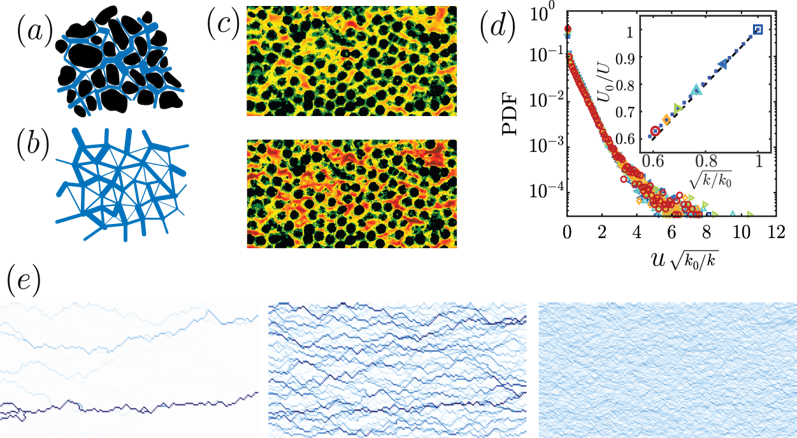Dynamics of Flow Networks in Porous Media

Understanding flow and transport of fluids and material in porous media is important for many environmental applications. A team at the Harvard MRSEC led by Amir and Weitz have modelled porous media as a network of pores connected with cylindrical tubes representing the pore-throats. Using this simplified model, they explain the experimentally observed exponential distribution of local fluid velocity in a disordered porous media composed of random packing of glass beads. Their model considers the evolution of systems that either become clogged (permeability decrease over time) or eroded (permeability increases over time). They find rich dynamics in which the flow networks either exhibit increasing heterogeneity (clogging regime) or become more homogeneous (erosion regime) over time.
Ariel Amir (Applied Math), and
David A. Weitz (Physics & Applied Physics)
2020-2021 Harvard MRSEC (DMR-2011754)
